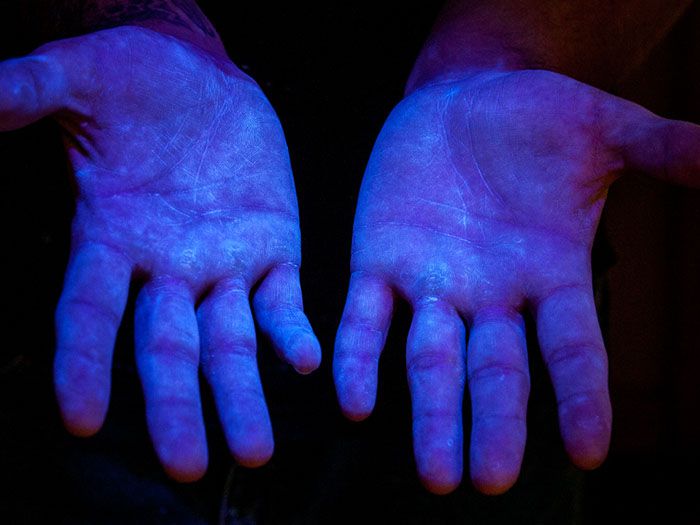Have you ever seen bacteria glow under ultraviolet (UV) light? It's quite a sight to behold, and you may be wondering why it happens. In this article, we'll explore the science behind why bacteria glow under UV light.
What is UV light?

UV light is a type of electromagnetic radiation that has a shorter wavelength than visible light. It is present in sunlight and can be produced artificially using UV lamps. UV light can be divided into three categories: UV-A, UV-B, and UV-C. UV-C is the most harmful type of UV light and is typically absorbed by the Earth's atmosphere before it reaches the surface.
What causes bacteria to glow under UV light?

The glow that you see when bacteria are exposed to UV light is due to a phenomenon called fluorescence. Fluorescence occurs when a substance absorbs light at one wavelength and emits light at a longer wavelength. In the case of bacteria, certain molecules within their cells, such as flavins and porphyrins, absorb UV light and emit visible light.
Why do bacteria have fluorescent molecules?

Not all bacteria have fluorescent molecules, but those that do likely evolved them as a way to protect themselves from UV damage. UV light can cause DNA damage in cells, which can lead to mutations and other harmful effects. The fluorescent molecules in bacteria may help to absorb and dissipate some of the harmful UV radiation, protecting the cells from damage.
How is fluorescence used in microbiology?

Fluorescence is a useful tool in microbiology because it allows researchers to visualize and study bacteria in a non-invasive way. By staining bacteria with fluorescent dyes or using genetically modified bacteria that produce fluorescent proteins, researchers can track the movement and behavior of bacteria in real-time. Fluorescence microscopy is also used to detect and identify bacteria in clinical settings.
Can all bacteria glow under UV light?

No, not all bacteria have fluorescent molecules, and not all fluorescent bacteria will glow under UV light. The ability to fluoresce depends on the specific molecules present in the bacteria and the conditions under which they are exposed to UV light.
What are some examples of fluorescent bacteria?

One well-known example of fluorescent bacteria is Vibrio fischeri, a species of bacteria that lives symbiotically with certain marine animals, such as squid and fish. The bacteria produce a blue-green light that helps to camouflage the animals from predators. Another example is Pseudomonas aeruginosa, which produces a green pigment that glows under UV light.
Conclusion
Bacteria glow under UV light due to fluorescence, which is caused by certain molecules within their cells. The ability to fluoresce likely evolved as a way to protect bacteria from UV damage. Fluorescence is a useful tool in microbiology and is used to study and identify bacteria in various settings.